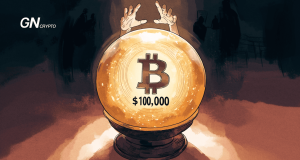Binance and Bitcoin Trading: Are the Volumes Fake?

A new report by Forbes suggests that 51% of the daily Bitcoin trading volume reported by the exchanges could be bogus, most notably on Binance, MEXC Global, and Bybit.
On this page
According to its authors, 573 million people visit crypto exchange websites every month, with Bitcoin, which they call “the great granddaddy” and “crypto’s gateway drug”, representing 40% of the $1 trillion in crypto assets outstanding.
Having analyzed 157 exchanges, the team noted that 21 crypto exchanges generate $1 billion or more in daily trading activity. Meanwhile, the next 33 exchanges’ volume varied between $200 million and $999 million across all contract types, spot, futures, and perpetuals.
The team also concluded that more than half of all reported trading volume “is likely to be fake or non-economic”. To prove that they state that the global daily Bitcoin volume for the industry was $128 billion on June 14, which is “51% less than the $262 billion one would get by taking the sum of self-reported volume from multiple sources.”
The biggest problem areas regarding fake volume are firms that tout big volume but operate with little or no regulatory oversight that would make their figures more credible, notably Binance, MEXC Global, and Bybit. Altogether, the lesser regulated exchanges in our study account for approximately $89 billion of the true volume (they claim $217 billion),
the report reads.
Other findings include that the Tether stablecoin continues to dominate the crypto trading economy, which especially holds for trading against Bitcoin, and that Bitcoin is also being actively traded against fiat other than the U.S. dollar and the British pound.
“In the Western world and particularly in the U.S., it is tempting to think of bitcoin only trading against either the U.S. dollar or the euro and British pound. But some of the largest trading pair activity occurs against fiat currencies like the Japanese yen and Korean won and against major stablecoins like Binance U.S. dollar and the USD coin,” the authors note, adding that they hope that the latest report will complement previous efforts to divulge fraud. In particular, they quoted the 2019 report by Bitwise, according to which 95% of CoinMarketCap’s bitcoin trading volume was fake and/or non-economic.
Previously, GNcrypto reported that Binance’s Zhao is set to prove in court that the exchange is not using a Ponzi Scheme.
The content on The Coinomist is for informational purposes only and should not be interpreted as financial advice. While we strive to provide accurate and up-to-date information, we do not guarantee the accuracy, completeness, or reliability of any content. Neither we accept liability for any errors or omissions in the information provided or for any financial losses incurred as a result of relying on this information. Actions based on this content are at your own risk. Always do your own research and consult a professional. See our Terms, Privacy Policy, and Disclaimers for more details.

























